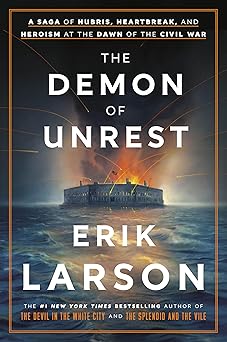
The months between Abraham Lincoln's election and the start of the Civil War were some of the most pivotal in American history. The country was in a state of turmoil, with the South seceding from the Union and the North trying to keep it intact. The tensions between the two regions were fueled by the issue of slavery, which had been a contentious topic for years. Despite Lincoln's victory in the election, many in the South saw him as a threat to their way of life and began to make plans for a separate nation.
The situation at Fort Sumter in Charleston Harbor was particularly volatile. The fort was a federal stronghold that was seen as a symbol of the Union's power, and the South was determined to take it from them. The commander of the fort, Major Robert Anderson, was a complex figure who was both sympathetic to the South and loyal to the Union. He was faced with the difficult task of defending the fort against a Confederate attack, while also navigating the treacherous waters of Southern politics. Meanwhile, the South was becoming increasingly radicalized, with figures like Edmund Ruffin stirring up passion and violence against the Union. The personal stories of those involved in this period are just as compelling as the historical events themselves. Mary Boykin Chesnut, for example, was a southern belle who was torn between her loyalty to the Confederacy and her own growing doubts about slavery.
As the situation at Fort Sumter escalated, Lincoln found himself at the center of a maelstrom of pressure and politics. He was struggling to keep the Union together, while also navigating the treacherous waters of his own administration. The fate of 750,000 Americans hung in the balance, and the outcome of the war was far from certain. Larson's masterful storytelling brings this period to life in a way that is both gripping and thought-provoking. The result is a dark and suspenseful narrative that captures the complexities and passion of a nation on the brink of war.
As I sit down to write about this powerful book, I am reminded of my own father's stories about growing up in a small town during a time of great social change. He spoke of the struggles his family faced, of the fears and doubts that many people lived with, and of the incredible sacrifice that was required of those who stood for what they believed in. This book has a similar power, one that tugs at the heartstrings and makes us think about the complexities of human nature.
The months leading up to the Civil War were a time of great upheaval in America. The tensions between the North and South were simmering just below the surface, and it seemed like the very fabric of the country was on the verge of tearing apart. The author masterfully weaves together the stories of several key individuals, including Major Robert Anderson and Mary Boykin Chesnut, to create a narrative that is both gripping and thought-provoking. We see the inner workings of the South's politics, the fear and violence that fueled the movement towards secession, and the personal struggles of those who found themselves caught in the middle. This is not just a story about the war; it's a story about the people who lived through it, with all their hopes, fears, and doubts.
The writing is stunning, with Larson capturing the mood and atmosphere of a nation on the brink of war. The characters are richly drawn, with flaws and contradictions that make them feel all the more real. We see the best and worst of humanity, with heroes and villains, and everyone in between. This is a book that will stay with you long after you finish reading it, one that will make you think about the consequences of our actions and the importance of standing up for what we believe in. It's a must-read for anyone who loves history, politics, or just great storytelling.
Rating: 3.5 / 5.0
The months between Abraham Lincoln's election and the start of the Civil War were some of the most pivotal in American history. The country was in a state of turmoil, with the South seceding from the Union and the North trying to keep it intact. The tensions between the two regions were fueled by the issue of slavery, which had been a contentious topic for years. The situation at Fort Sumter in Charleston Harbor was volatile, with the commander, Major Robert Anderson, facing a difficult task of defending the fort against a Confederate attack. The personal stories of those involved, such as Mary Boykin Chesnut, are just as compelling as the historical events themselves. The writing is stunning, capturing the mood and atmosphere of a nation on the brink of war. The characters are richly drawn, with flaws and contradictions that make them feel real. This is a book that will stay with you long after you finish reading it, one that will make you think about the consequences of our actions and the importance of standing up for what we believe in.